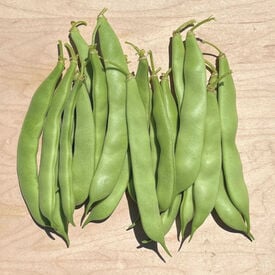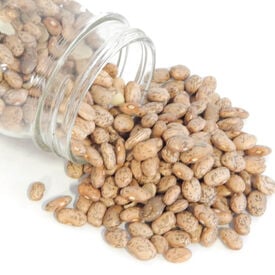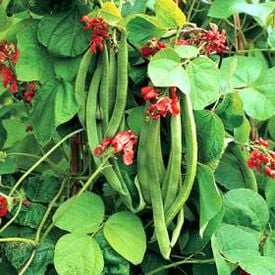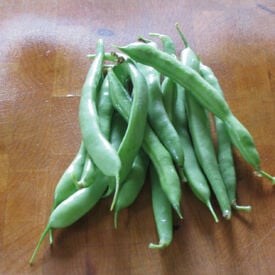The Taylor Dwarf Horticulture Bean, also known as the Taylor Horticulture Bean or simply Taylor Dwarf Bean, is a popular heirloom bean variety prized for its delicious flavor and historical significance. This bean variety has a rich history dating back to the early 19th century in the United States. It is a bush-type bean, which means it grows in a compact, bushy form rather than climbing like pole beans. Taylor Dwarf Horticulture Beans are highly regarded for their superb taste, which is characterized by a creamy texture and a slightly nutty, earthy flavor. The beans are typically harvested when they are young and tender, making them ideal for fresh consumption or canning. The pods of the Taylor Dwarf Horticulture Bean are medium-sized and typically measure around 4-5 inches in length. The plants themselves are relatively small and bushy, reaching a height of about 18-24 inches, which makes them suitable for smaller gardens or container gardening. This variety has a relatively short maturity period, typically taking around 55-60 days from planting to harvest. The beans themselves are a pale cream or off-white color. Taylor Dwarf Horticulture Beans are known for their good disease resistance, which helps ensure a healthy crop. In terms of yield, you can expect a respectable harvest of beans per row, with each plant producing multiple pods. Proper spacing between plants should be around 4-6 inches apart in rows that are spaced about 18-24 inches apart. These beans thrive in well-drained soil with good organic matter content and prefer full sun for optimal growth. Adequate moisture and regular harvesting will help ensure a bountiful crop of these delicious and historically significant beans.
The Pinto bean is a great tasting bean, very popular in many Mexican dishes! The Pinto bean plant is a half-runner type that produces 20 inch plants with light tan seeds with brown speckles. Eat young when green for delicious flavor. Great bean for using for refried beans.
Scarlet Runner beans are a striking heirloom variety with a rich history that traces back to indigenous cultures in Central and South America. Introduced to Europe in the 17th century, these beans quickly gained popularity for both their ornamental beauty and culinary qualities. Characterized by their vigorous growth habit, Scarlet Runner plants can climb up to 10 feet or more, making them ideal for trellises or fences. The most notable feature of this variety is its vibrant scarlet flowers, which attract pollinators and add a stunning visual appeal to gardens. The pods are long and flat, typically green, maturing to a reddish hue, and are best harvested while still young and tender. Known for their rich, earthy flavor and creamy texture, Scarlet Runner beans are delicious in a variety of dishes, from stews to salads. Harvesting usually occurs in late summer to early fall, ensuring that the beans are picked before they dry out. With their ornamental charm, exceptional taste, and high productivity, Scarlet Runner beans remain a beloved choice for gardeners looking to combine beauty with culinary excellence.
The Mountaineer White Half Runner is a tender half runner bean with succulent white seeds. It boasts terrific yields of old-fashioned, rich "beany" beans that taste and smell terrific. Vigorous plants, big yields. Stringless when young, excellent for baking.




